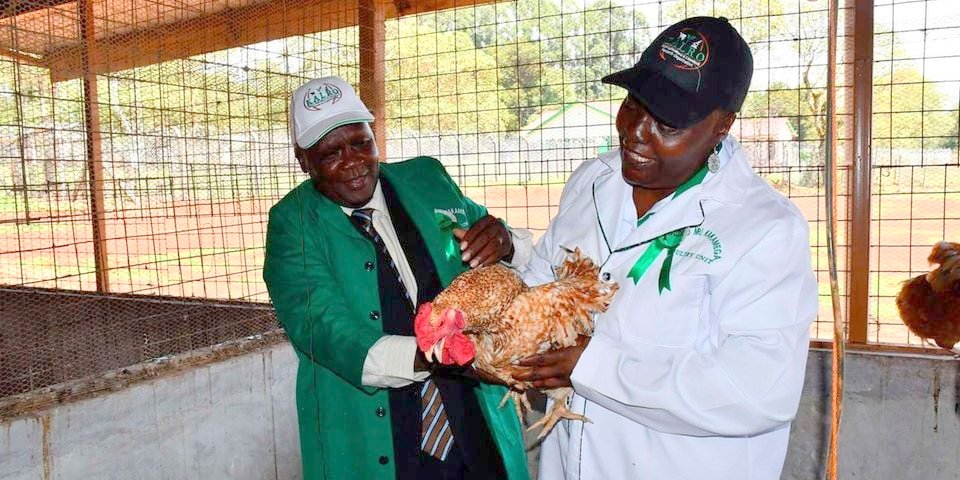The poultry industry in Western Kenya is to get a boost with the launch of a breeding and multiplication house at the Non-ruminant Research Institute (NRI) in Kakamega County.
The 2,000-bird capacity centre will be producing a new Improved Kenya Agricultural Livestock Research Organisation (Kalro) chicken known as KC3.
The breed is well adapted to tropical climatic conditions and requires less feed than the ordinary or exotic ones.
Kalro says the breed is also resistant to common infections compared to the local birds.
The Sh5 million poultry breeding structure was funded by the European Union and the government through the Agrifi Kenya Climate Smart Agricultural Productivity Project.
The breeding and multiplication house has been constructed to speed up the multiplication of the chickens and increase the availability of day-old chicks to farmers in Western Kenya, North and Central Rift, Nyanza and Kisii counties, where demand for white meat has been on the increase in recent years.
During the launch, Livestock Principal Secretary, Joshua Chepchieng, said the KC3 line was released in response to socio-cultural demands.
“This chicken breed has a plumage and colour that appeal to market demands, particularly in Western Kenya,” Dr Chepchieng said.
“These improved lines grow and produce as many eggs as the local breeds while consuming less feed compared to exotics.”
While the local birds, popularly known as kienyeji, take eight months to reach table weight and point of lay, the Kalro improved one takes only four months, the organisation says.
A KC3 hen can lay up to 230 eggs per year.
The country’s annual production of day-old chicks is 600,000 yet demand is more than two million.
“As demand outstripped supply, and farmers had to wait for three to four months for chicks, a decision was made to increase capacity at NRI Kakamega by building a breeding house and expanding the hatchery,” he said.
With the establishment of the structure in Kakamega, the research institute will be producing and supplying 34,000 day old chicks every month.
“The Kakamega structure can produce 19,000 chicks per month. Together with the other in Naivasha, we will be producing 34,000 chicks in the same period,” Dr Chepchieng said.
Kalro Kakamega Institute Director, Joseph Munyasi, said indigenous chickens account for 78 per cent of poultry in Kenya, adding that it is an integral part of the farming system in many households.
“Chickens are mainly owned by women, young people and landless families as they are an easy source of income. The birds are also credited for their adaptability,” Dr Munyasi added.
Despite accounting for more than two-thirds of the chicken population, the productivity of indigenous breeds is constrained by the high cost of feeds, poor animal quality, diseases, low genetic potential and poor management practices.
“With this in mind, Kalro has maintained a robust chicken programme with four long-term objectives – enhanced sustainable production, highly developed multiplication and dissemination infrastructure, established conservation and husbandry support schemes,” the director said.
Source: https://nation.africa/kenya/business/seeds-of-gold/kalro-introduces-new-improved-chicken-breed–4199230

